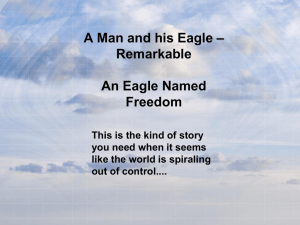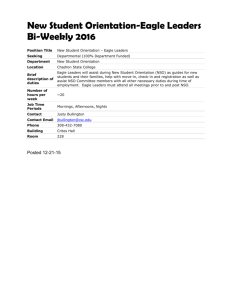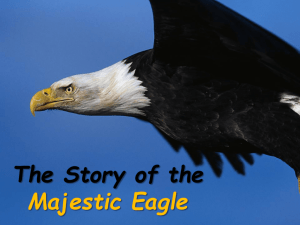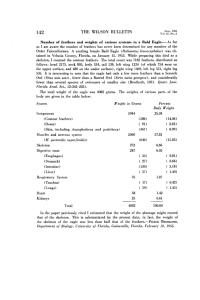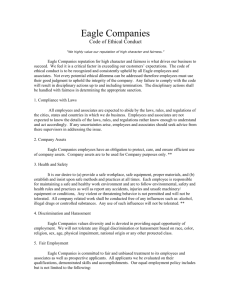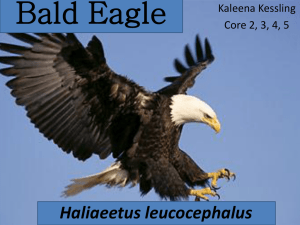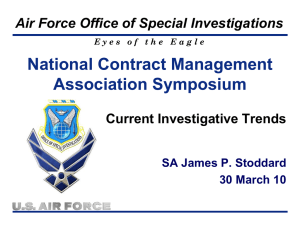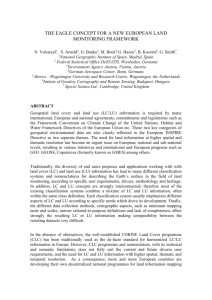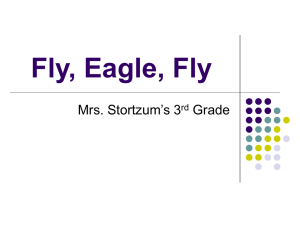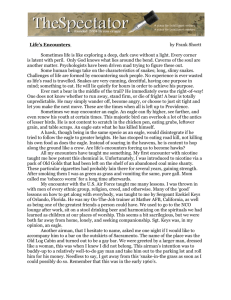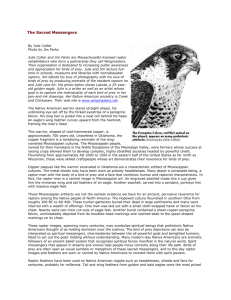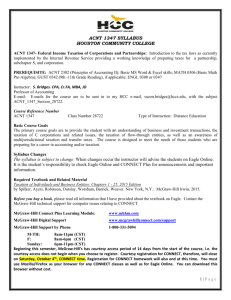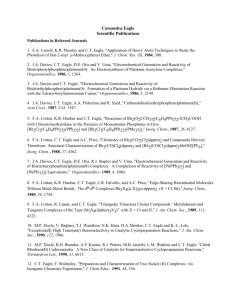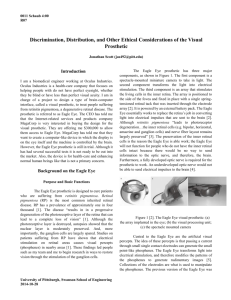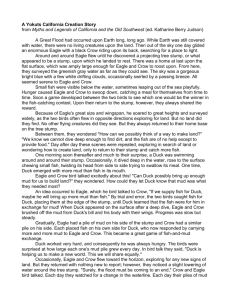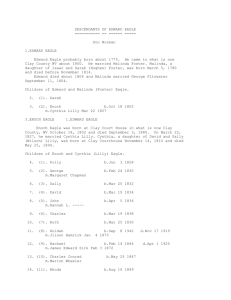storytellingprimary
advertisement
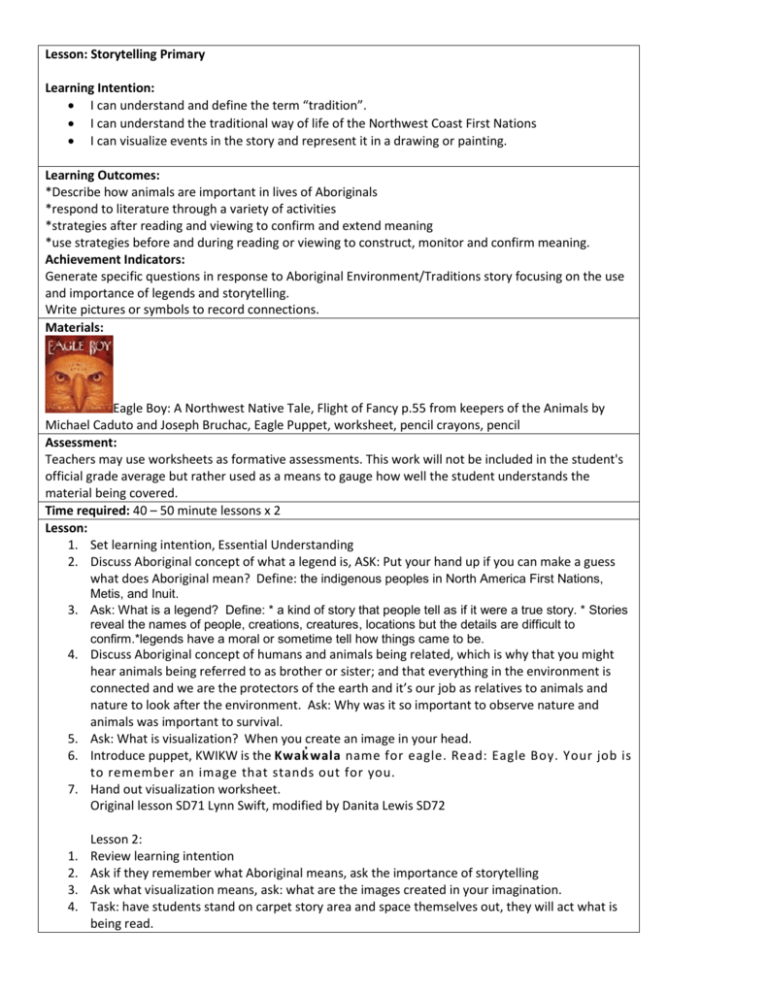
Lesson: Storytelling Primary Learning Intention: I can understand and define the term “tradition”. I can understand the traditional way of life of the Northwest Coast First Nations I can visualize events in the story and represent it in a drawing or painting. Learning Outcomes: *Describe how animals are important in lives of Aboriginals *respond to literature through a variety of activities *strategies after reading and viewing to confirm and extend meaning *use strategies before and during reading or viewing to construct, monitor and confirm meaning. Achievement Indicators: Generate specific questions in response to Aboriginal Environment/Traditions story focusing on the use and importance of legends and storytelling. Write pictures or symbols to record connections. Materials: Eagle Boy: A Northwest Native Tale, Flight of Fancy p.55 from keepers of the Animals by Michael Caduto and Joseph Bruchac, Eagle Puppet, worksheet, pencil crayons, pencil Assessment: Teachers may use worksheets as formative assessments. This work will not be included in the student's official grade average but rather used as a means to gauge how well the student understands the material being covered. Time required: 40 – 50 minute lessons x 2 Lesson: 1. Set learning intention, Essential Understanding 2. Discuss Aboriginal concept of what a legend is, ASK: Put your hand up if you can make a guess what does Aboriginal mean? Define: the indigenous peoples in North America First Nations, Metis, and Inuit. 3. Ask: What is a legend? Define: * a kind of story that people tell as if it were a true story. * Stories reveal the names of people, creations, creatures, locations but the details are difficult to confirm.*legends have a moral or sometime tell how things came to be. 4. Discuss Aboriginal concept of humans and animals being related, which is why that you might hear animals being referred to as brother or sister; and that everything in the environment is connected and we are the protectors of the earth and it’s our job as relatives to animals and nature to look after the environment. Ask: Why was it so important to observe nature and animals was important to survival. 5. Ask: What is visualization? When you create an image in your head. 6. Introduce puppet, KWIKW is the Kwak ̓ w ala name for eagle. Read: Eagle Boy. Your job is to remember an image that stands out for you. 7. Hand out visualization worksheet. Original lesson SD71 Lynn Swift, modified by Danita Lewis SD72 1. 2. 3. 4. Lesson 2: Review learning intention Ask if they remember what Aboriginal means, ask the importance of storytelling Ask what visualization means, ask: what are the images created in your imagination. Task: have students stand on carpet story area and space themselves out, they will act what is being read. Flight of Fantasy From the book ‘Keepers of the Animals’ page 56 By Michael J. Caduto and Joseph Bruchac To begin: Ask the students to close their eyes, relax and clear their minds to make them more able to imagine what you are about to tell them. Start the music (flute music works nicely). Begin speaking to them……. You are going to travel to places you’ve never been before, moving high above Earth. But first you must change, for now you are too heavy and would never get off the ground. Imagine you are an eagle. Each ankle is long and skinny. You have only four toes on each foot, but not all face in the same direction. Three toes are held in front and one sticks out of the back of each foot. The end of each toe has a very sharp, curved toenail. The outside of your feet and ankles are covered with rough, bumpy scales. There is a perch in front of you and you hop over to it and feel your toes close around it. You are now perching. (Pause once in a while to allow the students to imagine what you are telling them.) Your legs are short and your knees are close in to your body. Your short body is tipped for-ward. You are very slim and compact. In place of hands you have wings. Flap them a few times and feel how they move. Your nose and mouth are joined together to form a sharp, curved beak - hooked and strong. You have no teeth. Your eyes are on the side of your head and they cannot turn as easily in their sockets. You have to turn your whole head to look around. Your ears are small holes found close to your eyes, beneath and behind them. Air sacs are found in many places in your body. They are like thin balloons connected to your lungs. Your bones have air spaces in them which make them much, much lighter than human bones. Feathers cover you all over except for your beak and feet. Soft down feathers grow close to your body and longer, wider feathers cover your body, shape your winds and form a broad tail. When you try to speak, only a loud hoarse call comes out. A great urge to go outside comes over you and you hop down off your perch and hop quickly to the nearest door. As you face outside, the wind calls to you and you jump, flapping your wings quickly and with great force. Up you go - over the trees and buildings and toward the sky. A great warm gust of wind pushes up under your wings and lifts you higher and higher until the trees look like the size of buttons. A mouse runs across a field far below you and you can see its shape very clearly, even though you are up so high. All of the colors of Earth look beautiful down below – green leaves, brown earth and blue water. Buildings and cars of all colors are connected with roads that look like thin ribbons. As you soar on the rising winds the breeze rushes around your body. You see a puffy white cloud ahead and with a few flaps of your wings and a tilt of your tail, you glide into the whiteness. It is cool and damp and you feel lost for a moment. Then you come out on the other side and see a great range of mountains on the horizon. The mountains and sky are your new home. As you fly high above Earth, you let out the long, loud cry of an eagle. (Pause here, stop talking, and let the music play, to let the students experience the imagination of flight without hearing any voices) Begin speaking again. And now it is time to slowly circle back down, down, down to Earth, back to where you began your journey. Open your eyes slowly, stand and stretch. Think about your favorite part of the journey………. 5. To extend the experience: Have the children compare their “arm spans” to the wing span of an eagle. Divide the group into teams and give each team some masking tape and a yard (or meter) stick. Have each team go to a different part of a wall and measure out 7 feet (2.1 meters), the eagle’s wingspan, and mark the distance with 2 small pieces of tape. Have each person go up to the wall and hold his or her arms out. How does each child’s arm span compare to an eagle’s wing span? Connections Name: _______________________________________________ Use pictures, symbols or words to record your connections. This is the image in my head from the story: This story reminded me of a time that:
